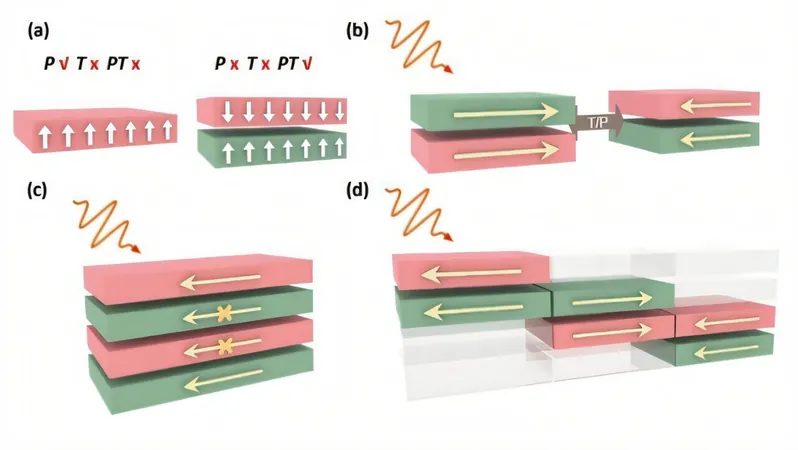
Groundbreaking Discovery: Surface-Dominant 'Skin Effect' Uncovered in Antiferromagnetic Materials!
2024-12-18
Author: Rajesh
In an exciting development for the field of materials science, a groundbreaking study has unveiled a fascinating phenomenon known as the "skin effect" in the nonlinear optical responses of antiferromagnetic materials. This research, recently published in the esteemed journal *Physical Review Letters*, promises to reshape our understanding of these materials and could pave the way for cutting-edge technological innovations.
Traditionally, nonlinear optical effects occur when light interacts with materials that lack inversion symmetry — meaning that certain physical properties differ when viewed from opposite directions. It has long been assumed that these effects were uniformly distributed throughout the material. However, this research team has shattered that misconception by revealing that in antiferromagnetic materials, the nonlinear optical response is concentrated primarily at the surfaces, akin to the skin effect observed in conductors where electrical currents predominantly flow along the exterior.
To delve deeper into this phenomenon, the researchers employed a unique computational method specifically designed to probe the nonlinear optical responses within antiferromagnets. They particularly focused on the bulk photovoltaic effect as a key example. Their groundbreaking findings indicated that while the overall inversion symmetry was disrupted at a global level, the local inversion symmetry within the bulk of the material remained largely intact.
This confinement of the nonlinear optical response to the top and bottom surfaces of the antiferromagnet signifies a monumental step forward. The research team launched a series of first-principles calculations on the two-dimensional antiferromagnet CrI3 to validate their findings, successfully confirming the surface-dominant behavior inherent in the bulk photovoltaic effect. Moreover, they investigated the second-harmonic generation effect, yielding results that were in full agreement with their theoretical predictions.
The implications of this discovery extend far beyond theoretical physics. The surface-localized effects in antiferromagnetic materials could potentially lead to new advances in photonics, optoelectronics, and quantum computing. As researchers continue to explore these materials, the future might hold transformative applications in advanced technologies that rely on efficient light manipulation.
Stay tuned as this field develops, and prepare to be amazed by the potential of antiferromagnetic materials as researchers uncover even more secrets that could revolutionize our technological landscape!




 Brasil (PT)
Brasil (PT)
 Canada (EN)
Canada (EN)
 Chile (ES)
Chile (ES)
 España (ES)
España (ES)
 France (FR)
France (FR)
 Hong Kong (EN)
Hong Kong (EN)
 Italia (IT)
Italia (IT)
 日本 (JA)
日本 (JA)
 Magyarország (HU)
Magyarország (HU)
 Norge (NO)
Norge (NO)
 Polska (PL)
Polska (PL)
 Schweiz (DE)
Schweiz (DE)
 Singapore (EN)
Singapore (EN)
 Sverige (SV)
Sverige (SV)
 Suomi (FI)
Suomi (FI)
 Türkiye (TR)
Türkiye (TR)